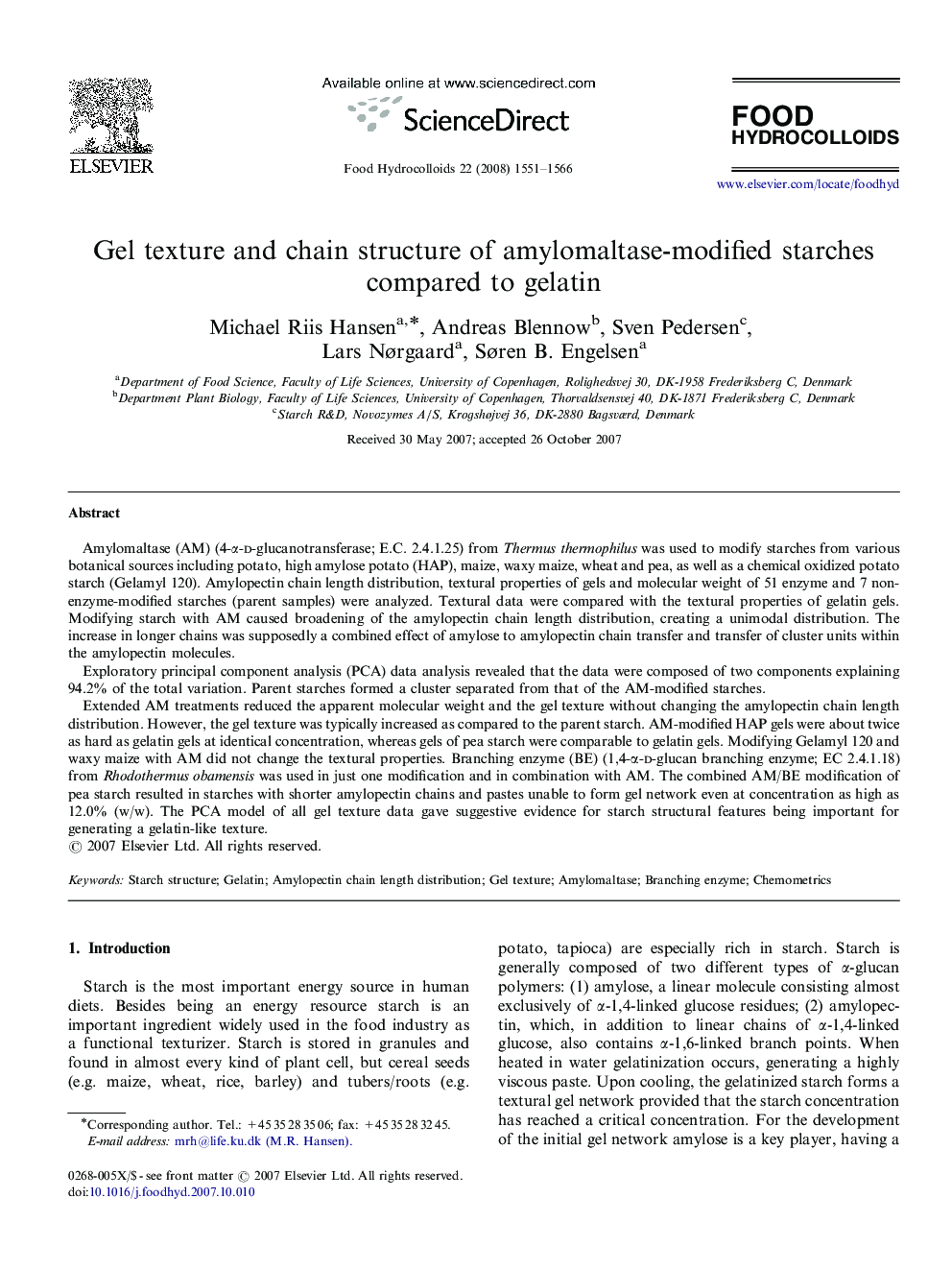| Article ID | Journal | Published Year | Pages | File Type |
|---|---|---|---|---|
| 605777 | Food Hydrocolloids | 2008 | 16 Pages |
Amylomaltase (AM) (4-α-d-glucanotransferase; E.C. 2.4.1.25) from Thermus thermophilus was used to modify starches from various botanical sources including potato, high amylose potato (HAP), maize, waxy maize, wheat and pea, as well as a chemical oxidized potato starch (Gelamyl 120). Amylopectin chain length distribution, textural properties of gels and molecular weight of 51 enzyme and 7 non-enzyme-modified starches (parent samples) were analyzed. Textural data were compared with the textural properties of gelatin gels. Modifying starch with AM caused broadening of the amylopectin chain length distribution, creating a unimodal distribution. The increase in longer chains was supposedly a combined effect of amylose to amylopectin chain transfer and transfer of cluster units within the amylopectin molecules.Exploratory principal component analysis (PCA) data analysis revealed that the data were composed of two components explaining 94.2% of the total variation. Parent starches formed a cluster separated from that of the AM-modified starches.Extended AM treatments reduced the apparent molecular weight and the gel texture without changing the amylopectin chain length distribution. However, the gel texture was typically increased as compared to the parent starch. AM-modified HAP gels were about twice as hard as gelatin gels at identical concentration, whereas gels of pea starch were comparable to gelatin gels. Modifying Gelamyl 120 and waxy maize with AM did not change the textural properties. Branching enzyme (BE) (1,4-α-d-glucan branching enzyme; EC 2.4.1.18) from Rhodothermus obamensis was used in just one modification and in combination with AM. The combined AM/BE modification of pea starch resulted in starches with shorter amylopectin chains and pastes unable to form gel network even at concentration as high as 12.0% (w/w). The PCA model of all gel texture data gave suggestive evidence for starch structural features being important for generating a gelatin-like texture.
